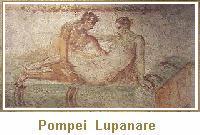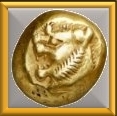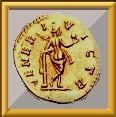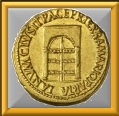
 SUMMARY SUMMARY
We present now a hot topic: what were the forms of prostitution in the East, in ancient Greece and Rome? We consulted ancient sources and recent studies about this tricky subject and we mentioned some of the most famous courtesans, known for their beauty, investigating their environment, as well. It follows that the Greek prostitutes loved to be polite, refined, though of course not forgetting the money. The roman ones, on the contrary, had a medium - and low cultural profile; they rather liked the orgiastic feast, in short, "went down to brass tacks."
The work also contains numerous figures, to remember, the way of coins and the fine arts, the most famous Haeterae, as Cratine, Phryne, Aspasia, Thais, as well as the myth of the Propetides; then a festival dedicated to Isis (in Egypt and then also in Rome), the Ericinae (Eryx, Sicily), the Ierodulae, sacred prostitutes, the Auletrides or flute players.
Prostitution was widespread in Rome and Greece but the characteristics of Roman society, conservative and austere, prevented the presence of those great figures of Haeterae who instead characterized the Classical and Hellenistic Greece
As for Rome, the discussion starts from Acca Larentia, said the she-wolf, who saved the twins Romulus and Remus, and then cites Flora, Domitilla, Clodia and Messalina.
 RÉSUMÉ RÉSUMÉ
Notre sujet est pour une fois brulant : quelles étaient les formes de la prostitution en Orient, en Grèce et à Rome dans l'Antiquité ? Nous avons consulté textes anciens et travaux récents concernant ce sujet délicat et nous avons cité certaines parmi les Hétaïres les plus fameuses, connues pour leur beauté, mais en essayant de reconstituer aussi leur cadre de vie. Il apparaît clairement que les courtisanes grecques étaient cultivées et raffinées, avec une bonne éducation, mais ne dédaignaient évidemment pas l'argent.
Au contraire les romaines étaient de culture médiocre et aimaient plutôt les fêtes orgiaques, sans guère de préliminaires.
Notre étude est largement ilustrée et rappelle avec des monnaies les hétaïres les plus fameuses comme Laïs, Phryné, Aspasie ou Thaïs, ainsi que le mythe des Propetides de Chypre ou les fêtes d'Isis (en Egypte, puis à Rome), Vénus Erycine (et son temple sur le mont Eryx en Sicile), les hiérodules, prostituées sacrées, et les Auletrides ou joueurs de flute.
La prostitution à Rome était plus répandue qu'en Grèce, mais le caractère conservateur et austère de la société romaine n'a pas permis à des prostituées de devenir aussi célèbres que les Hétaïres de la Grèce classique et hellénistique.
Pour ce qui concerne Rome, l'histoire commence par Acca Larenzia, dite la louve, qui sauva les Jumeaux Rémus et Romulus et continue par Flora, Domitilla, Clodia et Messalina.
 RIASSUNTO RIASSUNTO
Gli AA toccano un argomento piccante: quali erano le forme della prostituzione in Oriente, in Grecia e a Roma nell'Antichità? Abbiamo consultato fonti antiche e studi recenti riguardanti il delicato argomento e abbiamo citato alcune tra le etére più famose, note per la loro bellezza, indagando anche il loro ambiente. Ne è risultato che le prostitute greche amavano essere colte, istruite , raffinate, sia pur ovviamente non disdegnando il denaro. Quelle romane, al contrario erano di medio--bassa cultura ed amavano piuttosto la festa orgiastica, insomma andavano più "al sodo".
Il lavoro, corredato da numerose figure, ricorda anche attraverso le monete le etére più famose quali Cratine, Frine, Aspasia, Taide, oltre al comportamento in gruppo di tipo sacrale delle Propètidi (Cipro), le feste dedicate ad Iside (in Egitto, e poi anche a Roma), le Ericine (di Erice,Sicilia), le Ierodulae, prostitute sacre, le Auletrides o suonatrici di flauto.
La prostituzione a Roma fu più diffusa che in Grecia ma le caratteristiche della società romana, tradizionalista e austera, impedirono la presenza quelle grandi figure di etère che invece caratterizzarono la Grecia classica ed ellenistica.
Per quanto riguarda Roma la trattazione parte da Acca Larenzia, detta la lupa, che salvò i gemelli Romolo e Remo, e cita poi Flora, Domitilla, Clodia e Messalina.
Aknowledgements:
Gli Autori inviano un sentito ringraziamento all'amico Michel Prieur che ha rivisto il nostro lavoro ed ha tradotto in francese l'abstract.
|



 SUMMARY
SUMMARY RÉSUMÉ
RÉSUMÉ RIASSUNTO
RIASSUNTO



